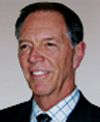
FAA Administrator Randy Babbitt has announced his response to the seeming crisis of confidence in the air traffic control system with a shuffle of responsibilities on the top floor of the FAA building. But while it is the sleeping-on-the-job the issue that has made headlines and provided endless material for late-night talk show writers in the past few weeks, the FAA’s other announcement addressed a different issue. The agency has formed a panel of independent experts to examine controller training, noting that about a third of the current controller workforce has been hired in the last five years. The National Air Traffic Controllers Association appears, as it has been throughout the last month of controversy, to be in agreement with the changes and to take responsibility for some of the recent gaffes. It is also linking them to training, even though the most notorious sleep- and judgment-related incidents have involved veteran controllers and supervisors. “With any occupation, there are those that don’t do the job or act in a way that is appropriate,” NATCA’s Executive Vice President Trish Gilbert told an online discussion forum of the Washington Post. “The workforce is stretched to its limits with 1/3 of the workforce now having less than 5 years in the FAA (with 2-3 years to certify as a fully certified controller) and many still in training. We believe that the FAA has just started to take the right steps in better screening and training of the ATC candidates.”
The changes at FAA headquarters are designed to put people in charge of the three key elements of the ATC system and theoretically make them accountable for the performance of their sectors. All are longtime FAA staffers. Walt Cochran is in charge of airport towers and radar facilities. Chris Metts will look after en route facilities and Glen Martin takes over Cleveland Center, which is the busiest facility in the system. “The FAA’s focus is safety,” Babbitt said. “These changes ensure that we have the right people in the right places to help us carry out our mission.”


































